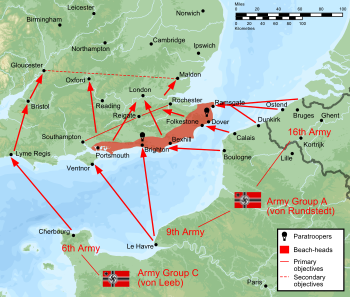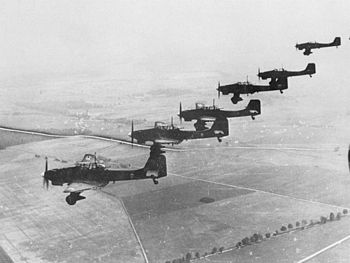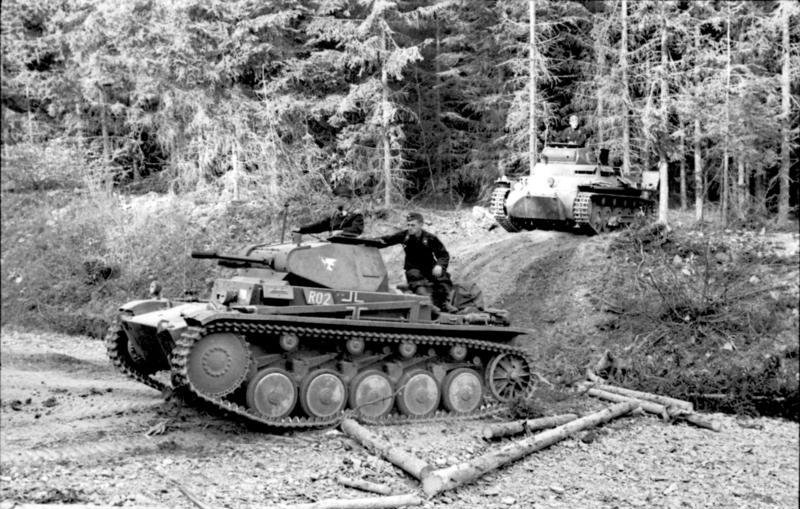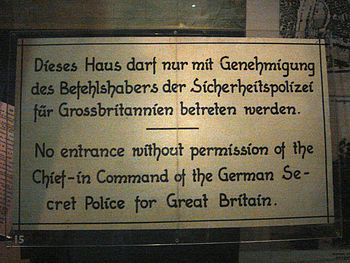
The next megagame I’m going to is Don’t Panic a what if scenario on Operation Sealion, the planned German invasion of Britain in the autumn of 1940. I’m going to be the British Control. So no playing for me. However that doesn’t mean that I can’t look at how I would plan the Operation Sealion invasion myself.
Operation Sealion
Firstly we need to get into the nazi mindset. They’re essentially divide and conquer gamblers with no medium term view. They have an innate belief in their own superiority and on the inevitability of their eventual victory.
The other interesting thing is that the German General Staff see crossing the Channel as simply a large scale river crossing. To them it’s like crossing the Rhine, only a bit wider. This affects their thinking and probably explains why they didn’t ever attempt it. As they planned it, the obstacles just multiplied.
Fuhrer Directive 16
On 16th July 1940 Hitler issued Directive No. 16 On preparations for a landing operation against England. This set the initial conditions for planning Operation Sealion.
Since England, in spite of her hopeless military situation, shows no signs of being ready to come to an understanding, I have decided to prepare a landing operation against England and, if necessary, to carry it out.
The aim of this operation will be to eliminate the English homeland as a base for the prosecution of the war against Germany and, if necessary, to occupy it completely.
Situation
The German army has been victorious, sweeping all before it. All of continental Europe from Poland to the Pyrenees is under German control. Only Britain stands alone against Germany. The British army has been defeated in Europe and has left most of its first line equipment behind.
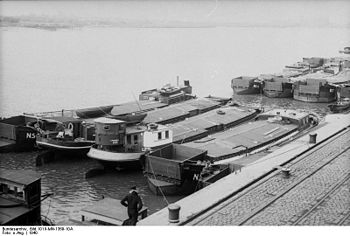
By mid August 1940 the panzer divisions will have been refitted, casualties either returned from hospital or been replaced. The luftwaffe is established in the French and Belgian airfields. The Kriegsmarine has assembled lots of barges ready for crossing the Channel.
In Britain the beach defences are being strengthened. However, the Briitsh Army is still short of transport and heavy equipment. The situation is so desperate that the British government has even called up old men and boys into a ‘Home Guard’. Weapons are so short that some of the Home Guard are armed with pikes.
Broadly the German invasion force can expect parity in numbers with the British in the invasion area. There is a qualitative advantage in terms of equipment and experience. The campaigns in Poland and the West have proved that beyond doubt. Operation Sealion is expected to follow the same pattern as the previous campaigns.
Mission
Hitler requires a speedy end to the war. German industry is short of manpower and the army needs to release skilled men soon. Operation Sealion is intended to bring the war to a speedy end.
Considerations for Operation Sealion
Broad vs Narrow Front
Normally military strategy suggests concentration of force. As an attacker you have a choice where you attack. A defender on the other hand has to spread out to cover all possible avenues of approach.
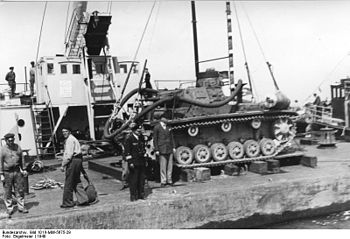
The British can be expected to rapidly deploy their remaining mobile reserve, including an armoured division, against any landing. This could tip the balance before strong enough German forces are ashore. The speed of response is likely to be slower if they cannot be sure where our schwerpunkt is located. Multiple landing points will aid this.
Ports
We need to capture a port as early as possible to enable unloading panzer forces. Once panzers are set free in England we can be assured of victory.
Both of these point to a strategy of attacking multiple small ports to ensure that at least one is captured rapidly.
Airfields
We also need forward airfields to help the Luftwaffe support ground forces. It will also enable air landing troops to be brought in. This will speed up the force build up and make it harder for the British to defeat us in detail before we can join up.
This leads to the selection of ports. RAF bases at Marston and Tangmere have recently been abandoned and are in close proximity to ports. Similarly Dover has two airfields in close proximity and the castle is a major threat to our use of the channel.
Causing Civilian Panic
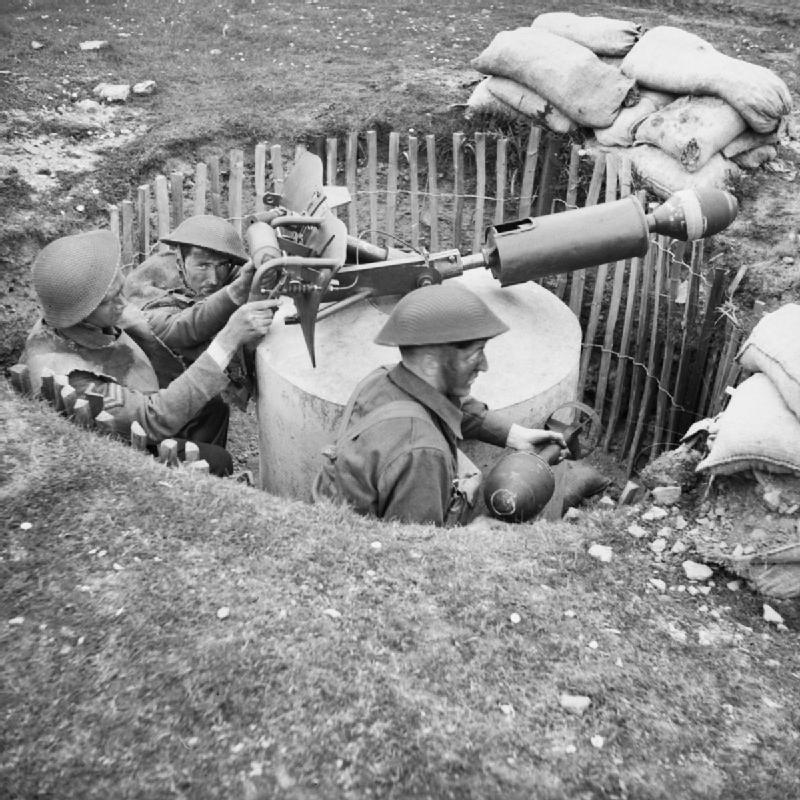
Fleeing civilians are useful to the German success. They cause bottlenecks that stop the enemy bringing up reinforcements. They also adversely affect morale. This latter is important politically as well as militarily. We need the British Government to sue for peace. The faster this happens the better.
Effective ways of reducing civilian morale are:
- airborne troops behind the main lines (even if only rumoured);
- tank breakthroughs, especially if accompanied with pictures at iconic places for the newspapers and cinema news reels;
- sinking of supply ships so that rationing is tightened;
- terror bombing of cities, especially London and other industrial centres.
Conclusion
Operation Sealion requires a rapid buildup with simultaneous action at sea and in the air to split or slow the British response is required to give time for a foothold to be established in England. This will maximise political pressure and ensure military victory.
General Outline
Operation Sealion’s broad strategic goals must be to get a foothold, rapidly expand it and encourage the political opposition in the UK. Ways to do this are
- surge the Kriegsmarine into the Atlantic for commerce raiding (apart from the bits directly needed for supporting the invasion)
- use a u-boat screen to stop the RN getting in amongst the invasion fleet.
- select four small ports across the Kent and Sussex coast for direct seaborne assault supported from the air. Put a battalion of paras on the closest airfield to the selected beaches
- reinforce success with air landed troops on the captured airfields and tanks into the captured ports
- transfer luftwaffe units to the captured airfields as rapidly as possible to increase loiter time and range
- collect up the paras as soon as possible for a second drop on London or wherever intelligence suggests Churchill or the Royal Family are hiding out.
